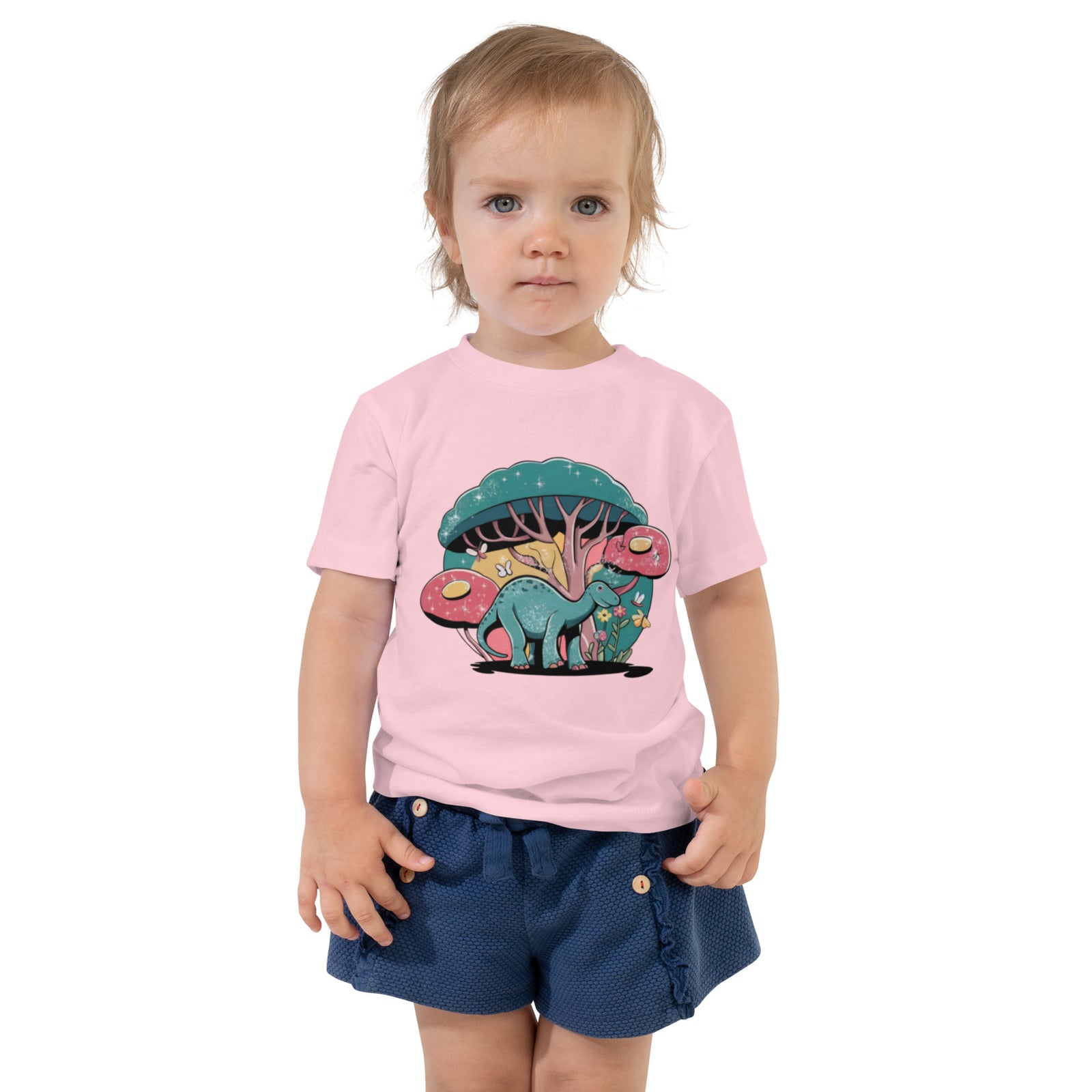Free Shipping On Orders over $75
Free Shipping On Orders over $75
Women's
Men's
Kids
Baby/Toddler
Accessories
Euhelopus
July 31, 2024 3 min read

(AI Interpretation)
Discovering Euhelopus: The Elegant Dinosaur
Dinosaur Facts:
- Dinosaur Type: Sauropod
- Period: Late Jurassic to Early Cretaceous
- Diet: Herbivore
- Length: Approximately 12-15 meters (40-49 feet)
- Height: Estimated 4-5 meters (13-16 feet)
- Weight: Roughly 8-10 tons
- Notable Features: Long neck, unique body proportions, and elongated limbs
Euhelopus for Kids
Meet Euhelopus!
Euhelopus is a fascinating dinosaur that roamed the earth millions of years ago. With its long neck and huge body, it looked quite different from many other dinosaurs. This giant was a herbivore, meaning it primarily ate plants.
What did Euhelopus look like?
Euhelopus had a long neck, which helped it reach high vegetation. Its limbs were long and slender, suggesting it was well-adapted for walking in its environment. The dinosaur's body was bulky, supported by sturdy legs that could carry its immense weight.
What did Euhelopus eat?
As a herbivore, Euhelopus fed on a variety of plants, including ferns, leaves, and perhaps even fruit. Its long neck allowed it to graze on vegetation that many other herbivores couldn't reach.
In-Depth Look at the Euhelopus
Anatomy and Physical Features
Euhelopus exemplified the characteristic traits of sauropods, with its long neck and tail. It is believed to have had a relatively lightweight body compared to its size, which helps in mobility. Its elongated limbs indicate specialization for walking in a semi-aquatic habitat, where it could feed on aquatic plants and thrive.
Behavior and Habitat
Euhelopus likely inhabited lush, wet environments filled with dense vegetation. This habitat would have been ideal for foraging the broad range of plant life that constituted its diet. It is believed that these dinosaurs were social animals, possibly moving in herds to reduce the risk of predation and to help in foraging.
Scientific Discovery and Research
The first fossils of Euhelopus were discovered in China during the early 20th century. Ever since, paleontologists have worked to uncover more information about this unique sauropod. Research continues, uncovering new insights about its biology and ecosystem interactions. The work of scientists has shown that understanding Euhelopus is crucial to comprehending the diverse environments of its time (Science Direct).
Social Behavior and Hunting Techniques
While Euhelopus was primarily a forager, it is thought that it may have exhibited social behaviors similar to those of modern-day herd animals. This social structure could have been beneficial for group foraging and protection from larger predators. The possibility of communication among groups adds another layer of intrigue to their behavior (American Museum of Natural History).
Euhelopus in Popular Culture
Though not as widely recognized as its carnivorous counterparts, Euhelopus has appeared in various documentaries and educational materials, highlighting its significance in the dinosaur family tree. Its unique physical characteristics lend well to creative representations in children’s books and animations.
Ongoing Research and Discoveries
Research on Euhelopus is ongoing, with new fossil discoveries providing more context for understanding its role in the Late Jurassic and Early Cretaceous periods. Advances in technology, such as imaging and 3D modeling, are allowing paleontologists to study specimens in unprecedented detail, leading to new hypotheses about its evolution and ecology (Natural History Museum).
Conclusion
Euhelopus remains one of the many marvels of the dinosaur kingdom, illustrating the diversity and adaptability of prehistoric life. As research continues, we can only imagine what new revelations await us regarding this extraordinary dinosaur and its world.





